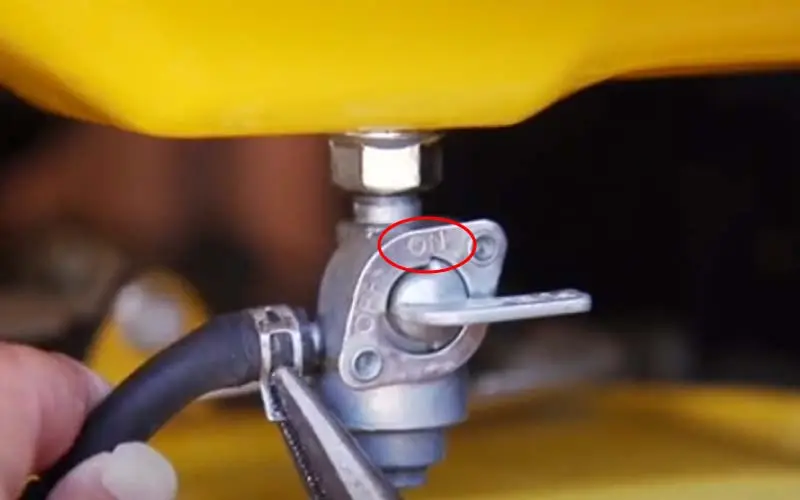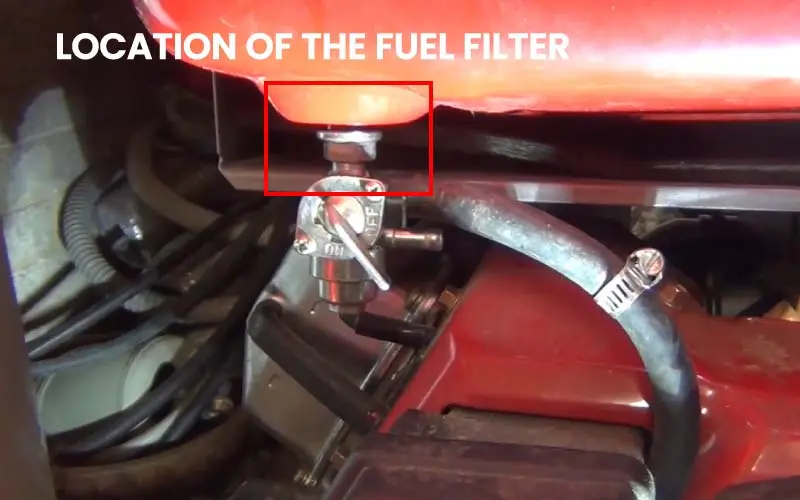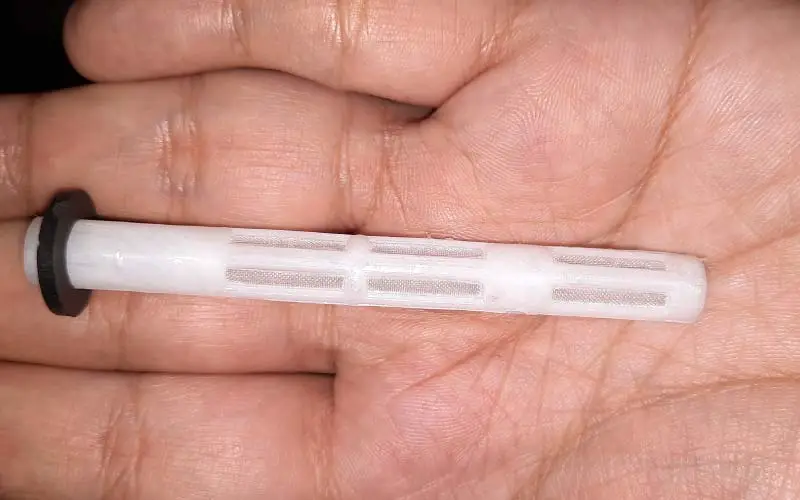How to Clean Generator Fuel Filter? – [Step By Step Guide]
A fuel filter is the only component that blocks the flow of dirt and debris to the generator’s fuel system.
If it’s clogged an improper fuel-to-air ratio will be fed to the combustion chamber causing rough running, lower output, misfiring, sputtering, etc.
This article aims to provide you with a step-by-step guide about how to clean a generator fuel filter in an instant.
How to Clean Generator Fuel Filter?
Required Tools and Materials
Safety Instructions
1. Turn off the Generator:
Shut down the generator and let it cool down in a well-ventilated area, Also make sure that there is no burning/hot source near the generator.
2. Drain the fuel:
To save the stored fuel we recommend draining it from the fuel line, carburetor, or drain valve.
This guide may help you to drain the fuel of the generator in an instant.
3. Shut the Fuel Valve:

Shut the fuel valve located on the base of the fuel tank, if your machine doesn’t have a one; clamp the gas line with a fuel line clamp.
4. Access the Fuel Filter:
Read the user manual to find out the exact location of the fuel filter, typically it’s located between the fuel tank and the fuel valve.

In the case of an inverter generator, the fuel filter may be located inside the side cover. Also, inverter generators may have different fuel filters, Below is the image of my Honda eu2200i’s fuel filter.

5. Release the Fuel Pressure:
To release the fuel pressure, you need to run the generator for a while so that the remaining fuel in the fuel lines can be consumed.
6. Disconnect the Fuel lines:
Disconnect the fuel lines and make sure to mark them so that you can reconnect them easily.
7. Remove the Fuel Filter:
Take an appropriate wrench and carefully remove the fuel filter from the housing. If the fuel filter is installed in the fuel lines, remove the metal clips using needle nose pliers.
8. Inspect Its Condition:
Inspect the physical condition of the fuel filter; if it appears too dirty or with damaged mesh, make sure to replace it.
9. Clean the Fuel Filter:
Wash the fuel filter with clean fresh fuel, and use a rag to further clean the dirt and debris from the mesh. Leave the fuel filter for a while to dry it down.
Don’t use water or compressed air. Water could sit in the fuel filter and destroy the fuel system once mixed with the fuel. Furthermore, the compressed air could drag the dirt or debris deeper into the fuel filter.
NOTE: If your machine has a disposable fuel filter, replace it with a newer one.
10. Reinstall the Fuel Filter:
Carefully reinstall the fuel filter, make sure that the fuel lines are connected properly, also tighten them a bit so that there will be no chance of leakage.
11. Fix the Leakages:
Check for leakages, If the seal of the fuel filter or fuel lines appears to be damaged, make sure to replace them otherwise excessive air could enter the engine causing a lean air-to-fuel mixture.
12. Fire up the Generator:
Refill the generator, connect the spark plug, and turn on the fuel supply.
Fire up the generator, keep it running for a while, and observe the sound and operation to make sure that it’s running smoothly.
What Are Signs of a Clogged Fuel Filter?
1. Misfiring or Stalling:
Due to the clogged fuel filter, an inconsistent flow of fuel can disturb the chain of combustion, and as a result, the generator misfire or stall frequently.
2. Sputtering:
Because of the improper fuel supply to the combustion chamber the generator running rough/sputtering.
3. Difficulty in Starting:
If your generator needs a lot of attempts to start, the fuel filter may be a culprit as there will be no rich fuel-to-air ratio available for burning even if you have slid the choke to the “OFF/Open” position.
4. Reduced Output and Runtime:
Since the generator isn’t getting an ideal fuel supply, it will struggle to provide the desired output with stable voltage. We recommend not connecting any appliance till the problem is fixed.
Also, you will find a significant drop in runtime.
5. Revs up and down:
Due to an interrupted fuel supply, the generator’s RPMs can be imbalanced and as a result, the generator is revving up and down.
6. Excessive Emissions Of Hydrocarbons:
Due to the incomplete combustion, the fumes from the exhaust contains increased amount of hydrocarbons like carbon monoxide, and nitrogen oxides that can negatively impact the environment.
Tips to Prevent It Happening Again
Do Regular Maintenance:
Regular clean-up of the carburetor, fuel lines, fuel filter, air filter, spark plug, etc. could reduce the chances of blockages.
Also, make sure to change the engine oil timely so that there will be no friction between the engine’s parts.
Use High-Quality Fresh Fuel:
Use high-octane fuel if possible, if not make sure to use high-quality fresh fuel with fuel stabilizer for a super smooth run-up.
The following things should be considered before using the fuel.
- The fuel should not be more than 3 months old, if you own a fuel container, make sure to stick a piece of duct tape on it and write the purchasing date of the fuel.
- The fuel container should be cleaned and airtight so that there will be no chance of entering moisture, dirt, or debris.
- Refill the generator in a clean area.
Keep the Generator in a Clean Area:
Though modern generators have superior filters to block dust and debris, still we recommend keeping the generator in a clean place.
Use Fuel Filters With Decent Micron Ratings:
Refer to the user manual first, In general, a 10 – 30 microns fuel filter is considered an ideal range for a gasoline engine.
Don’t Store the Generator With Fuel:
Drain the fuel when the generator needs to be stored for more than a month. Prolong storage of the fuel could leave the sticky material when evaporated or can be stalled by absorbing the moisture content from the air.
What Damages the Generator’s Fuel Filter?
Below are the reasons that could damage the fuel filter within no time.
How Often Should I Clean the Fuel Filter?
As a general thumb rule, the fuel filter of the generator should be cleaned twice a year or right after the operation of 150 – 200 hours.
How Often Should a Fuel Filter Be Replaced?
We recommend referring to the user manual; however, as a general thumb rule a fuel filter should be replaced after 400 hours of operation or every 2 – 4 years (Source).
What Happens When Fuel Filter Is Dirty?
If the fuel filter is dirty the generator could provide lower runtime, decreased output, fluctuated voltage, or even misfires.
What Is the Best Thing to Clean a Fuel Filter With?
Fresh Gasoline and a rag will be enough to clean the fuel filter; we don’t recommend using a brush as it could damage the mesh of the oil filter.
CAUTION: Don’t ever wash the fuel filter with the water, the residual water could mix with the fuel and destroy the fuel system.
What Type of Fuel Filter Should I Use for My Generator?
It depends on the type of generator you own, we recommend Reading the user manual before making any buying decision, if you have lost the user manual make sure to consult with customer support.
Final Words
Regular inspection of the fuel filter will not only keep your generator stress-free but also save you from costly repairs down the road.
Also, use fresh non-contaminated fuel with a premium fuel stabilizer to enhance the performance of the machine.
I hope we have delivered what we promised, If something is missing, please let us know in the comment section!
Frequently Asked Questions – FAQs
Can a Dirty Fuel Filter Damage the Generator?
Yes, a clogged fuel filter could negatively affect the vital organs of the machine like AVR, fuel pump, etc.
Can a Bad Fuel Filter Cause Fluctuated RPMs?
Yes, a bad or dirty fuel filter could restrict the flow to the combustion chamber causing irregular RPMs.
Will a Clogged Fuel Filter Cause Loss of Power?
Yes, a clogged fuel/oil filter will restrict the flow of fuel to the combustion chamber and as a result, the RPMs and engine power could be reduced causing lower output with fluctuated voltages as well.

Kashif has been a valuable asset to the electric generator industry for over 5 years. Now, As a skilled energy engineer, he’s been on the front lines of diagnosing problems, fixing broken parts, and performing routine maintenance tasks to keep generators running smoothly.
